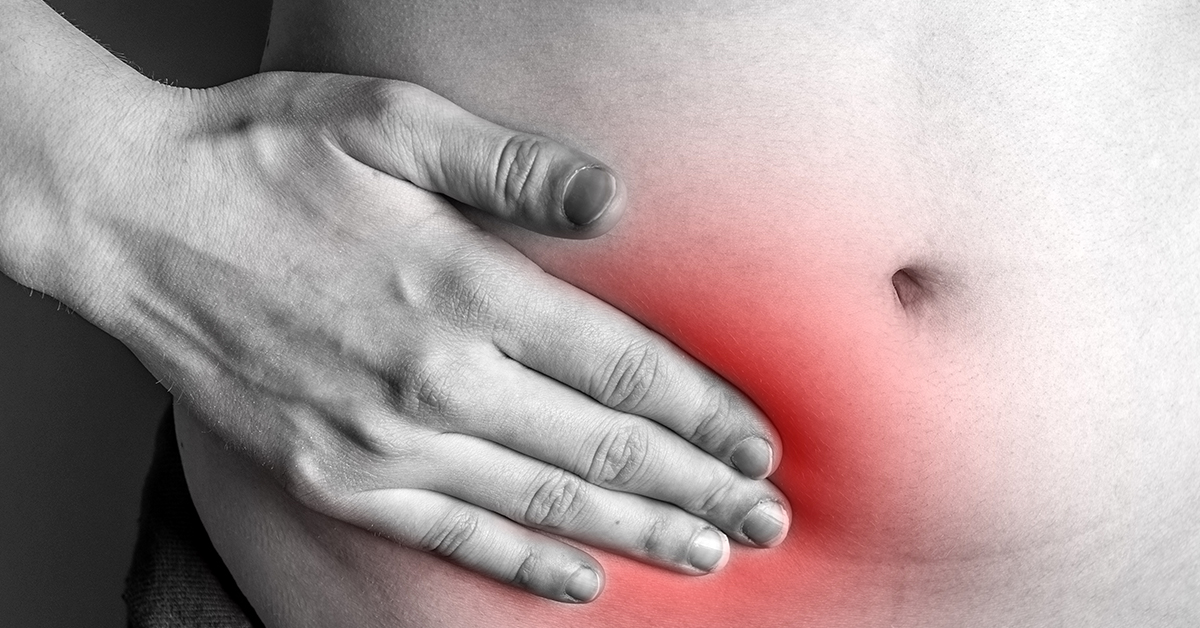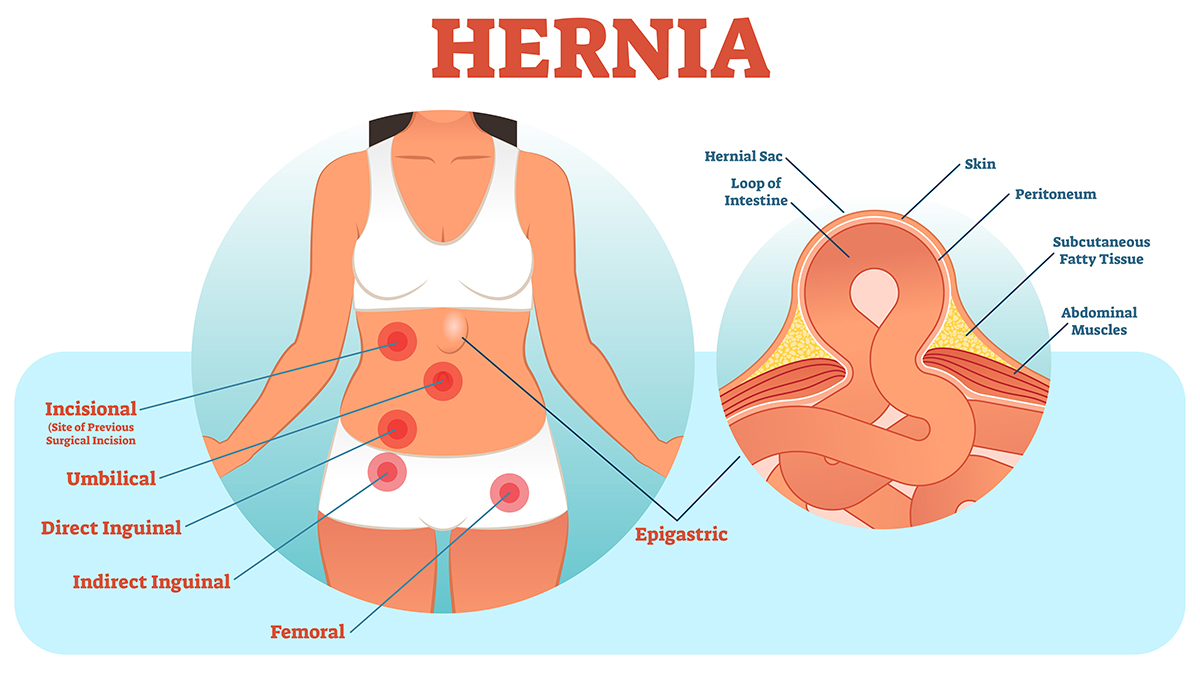

COURTESY PHOTO
According to The Cleveland Clinic: “A hernia occurs when an internal organ or other body part protrudes through the wall of muscle or tissue that normally contains it.” There are several common types of hernias that develop in different areas of the body. The most common is the inguinal hernia.
With an inguinal hernia, fat tissue or a piece of small intestine bulges through a weakness or tear in the peritoneum, the thin, muscular wall that holds the abdominal organs in place, and into the inguinal canal, a tubular passage through the lower layers of the abdomen. This type is more common in men than in women.
The femoral hernia is another common type. It occurs when fat or small intestine protrudes into the groin at the top of the inner thigh. This type is more common in older women. An umbilical hernia occurs near the belly button and most often affects babies and young children. An incisional hernia is found near the site of an incision from a previous surgery.


COURTESY GRAPHIC
All of these types of hernias present with a noticeable bulge or lump on the outside of the body. But there’s one type of hernia you can’t see, the hiatal hernia. This type occurs when the upper portion of the stomach pushes out of the abdominal cavity and into the chest cavity through an opening in the diaphragm, the sheet of muscle that separates the chest from the abdomen.
The presence of a bulge or lump in the affected area is the most common symptom of a hernia. Typically, a hernia is painless, but it may result in discomfort when standing, straining or lifting heavy objects. Symptoms of a hiatal hernia may include heartburn, trouble swallowing and chest pain.
A hernia can be congenital or present at birth, such as a developmental weakness in the muscles of the abdomen or groin. Hernias can also develop later in life. There are certain activities and medical conditions that put you at greater risk for developing a hernia.
Hernia risk factors include straining on the toilet, intensive exercising, lifting objects too heavy for you or not lifting properly, being overweight or obese, having fluid in your abdomen, having an enlarged prostate, smoking and having a persistent cough. Being pregnant and having had surgery also increase your hernia risk.
Most hernias don’t cause problems and don’t require active treatment. Once your doctor has discovered a hernia, often on a routine physical exam, they will likely choose to “watch and wait.” This involves observing the hernia over time to see if it becomes larger, causes pain or threatens complications. If this occurs, your doctor may recommend hernia repair surgery.
Hernia repair surgery is quite common. More than one million procedures are performed each year in the United States, and approximately 800,000 of those are performed to repair inguinal hernias. Inguinal hernia repair is among the most frequently performed surgeries in the nation.
Surgery to repair a hernia may be open or laparoscopic. With open surgery, an incision is made near the hernia, the bulging tissue is pushed back into place and the weakened tissue is stitched back together, often using a mesh material for support.
During laparoscopic surgery, the same steps are taken, but the entire surgery is performed through several small incisions using tiny surgical instruments and a lighted camera. Sometimes, doctors perform laparoscopic hernia repair surgery using robotic techniques, where the surgeon operates by maneuvering a precise robotic arm that holds the surgical instruments and camera.
Hernias caused by congenital weaknesses generally cannot be prevented, but you can lower your risk for developing a hernia later in life by concentrating on a few key steps. Stop smoking, maintain a healthy body weight, try not to strain when going to the bathroom, eat a high-fiber diet to avoid constipation and perform exercises that strengthen abdominal muscles. Also, avoid lifting weights that are too heavy for you and when you do lift, use proper lifting techniques.




Leave a Reply